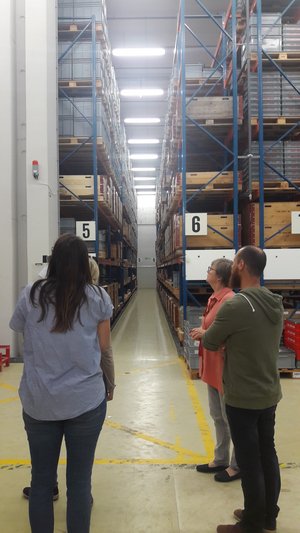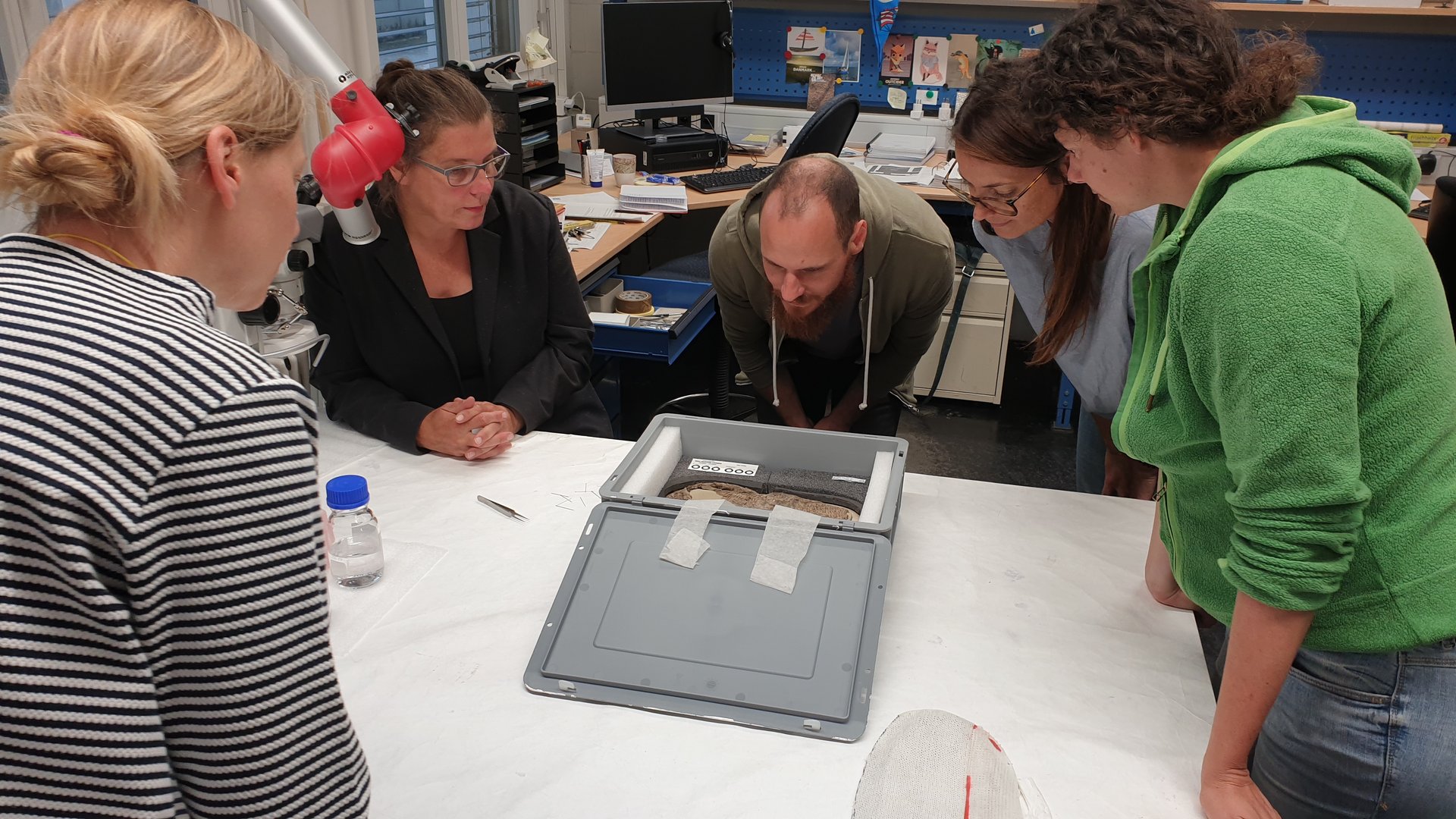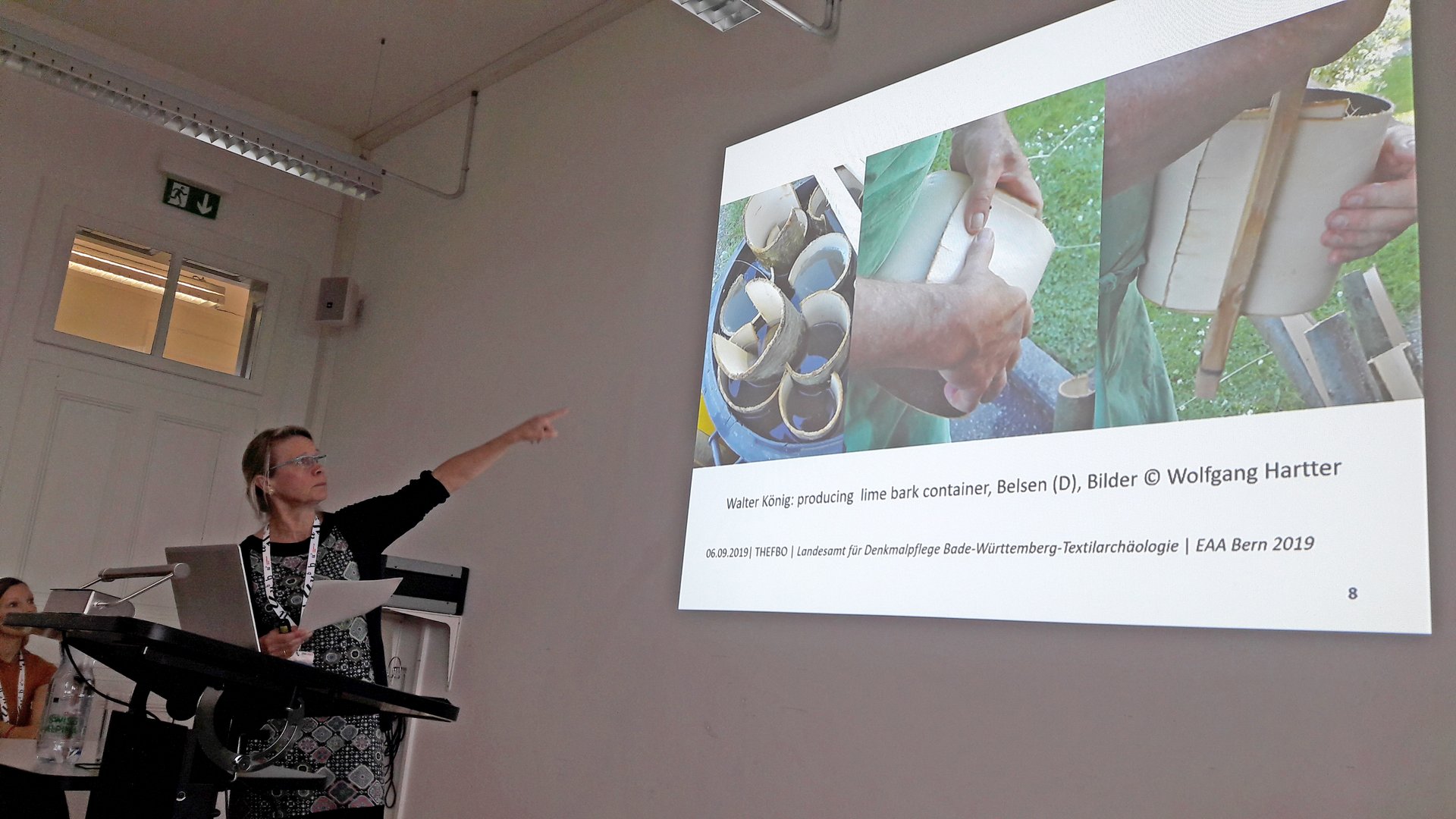

From 4th to 7th September the 25th EAA Annual Meeting took place in Bern. About 2000 archaeologists and scientists met for a professional exchange. THEFBO was part of this year's conference with the session "Organic Containers and Ceramic - Supplementary or Counterweight?
Thankfully, Ingrid had organised for us a visit to the Archaeological Service of the Canton of Bern in advance. On 05.09. Barbara Chevallier, head of the conservation and restoration department, led us through the premises.

Afterwards the two curators Johanna Klügl and Friederike Moll-Dau showed us some selected textiles from Bern and the surrounding area. Among them were Neolithic textiles from the melting ice field of the Schnidejoch.

The next morning at 8:30 am our session about the relationship between organic containers and pottery started. The ten lectures of the session reflected the wide range of this question.
The bark containers from the LBK wells in Saxony (H. Stäuble) showed a specific function of the organic vessels, namely to draw water from the wells. Pottery would not be suitable here because of its fragility and weight.
The presentation of the bark containers from Yverdon (J. Banck-Burgess) clearly showed that they had been manufactured for specific properties. In addition to the breaking strength and at the same time lightness, the technically ingenious connecting seam between the wall and floor sections guaranteed watertightness.

It is similarly with the bow case of the Schnidejoch made of birch bark (J. Klügl). The bow was protected in the best possible way by multi-layered bark, which lay with the outside to each other and whose individual layers were worked offset to each other.
In the talk on wooden containers (S. Böhm), examples from southwest German and Swiss lake dwellings were used to illustrate the large number of different wooden containers. The relationship between wooden containers and pottery within a culture was also discussed. Both belong to the functional class of containers and thus overlap in their function.
With the talks on an organic container that was possibly made from manure (G. Prats, F. Antolín, M. Berihuete, K. Ismail-Meyer, Ch. Harb), and on the use of fish skin (R. Vávra), materials were also illuminated that are rarely noticed because they are very rarely preserved or material analysis is sometimes difficult.
The presentaion on organic containers from mobile societies from the Siberian and North American region (H. Piezonka) illustrated the variety of materials and applications used. The different symbolic meanings of some vessels in these societies were also shown.
The talk on a backpack from the Hornstaad-Hörnle IA settlement (A. Reichert, J. Banck-Burgess, H. Schlichtherle) also dealt with mobility. A. Reichert reported on their reconstruction.
During the talk on the coiled baskets from the South German wetland settlements (A. Probst-Böhm), the main question was whether the presented coiled baskets were used for cooking. Crusted food remains in the archaeological finds as well as ethnological comparisons suggest this.
The session concluded with a lecture on pottery production in Anatolia, the Levant and Mesopotamia (I. Franz). Textiles such as coiled baskets were used for shaping pottery.
The session was very well attended and the interest in the topic is very high. The question "Organic Containers and Ceramic - Supplementary or Counterweight?" in the title of the session can already be answered to the effect that both are true. The session showed that the importance of organic containers opens new perspectives and research approaches in the assessment of textiles as well as pottery.
- S. Böhm und A. Probst-Böhm